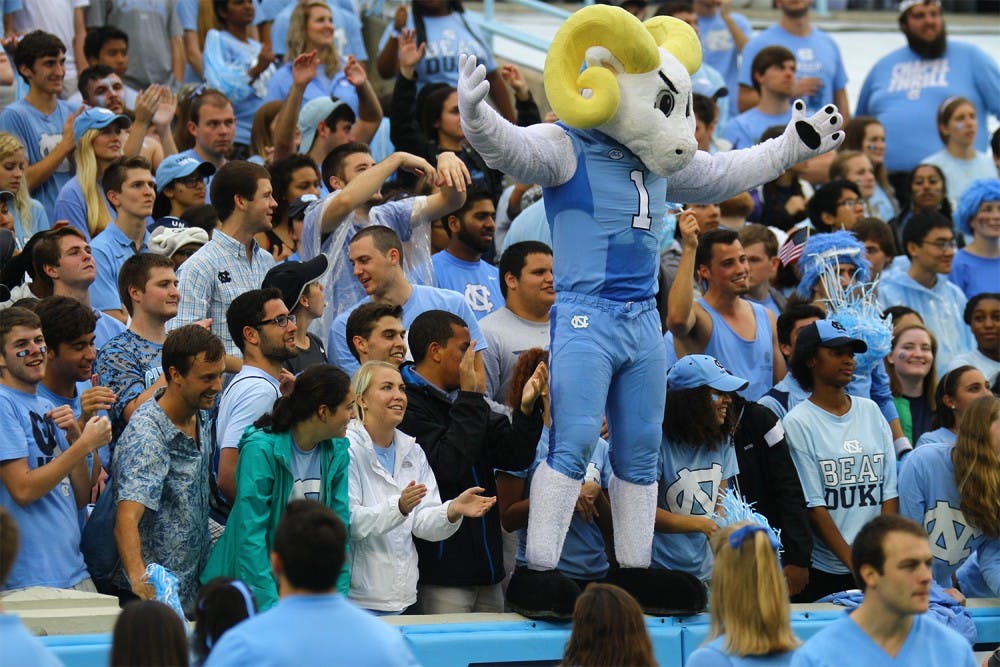Long before Carolina Blue evoked thoughts of Kenan Memorial Stadium and the Smith Center at UNC, the school color originated with a campus debate society.
The Dialectic Society, now half of the Dialectic and Philathropic Societies better known as DiPhi, started the tradition when it decided to put light blue ribbons on its diplomas. Two centuries later, this color is trademarked and part of the campus landscape.
Senior Katrina Smith, joint senate president of DiPhi, said the society’s choice of ribbon color was largely due to the limited selection available to universities at the time. North Carolina State University chose pink and blue before opting for red and white years later.
Nicholas Graham, UNC’s archivist, said the colors did not become associated with University athletics until the 1880s and 1890s, when UNC began participating in intercollegiate athletics.
“They were following the lead of other schools, especially Ivy League schools, who had nicknames and had school colors,” Graham said. “So that was around the time that a lot of our traditions on campus emerged.”
The emergence of light blue and white as school colors coincided with the beginning of “Tar Heels” as a nickname for University athletics, Graham said. Still, he said records do not show the color referred to as “Carolina Blue” until the 1930s and 1940s.
By the late 1900s, an increase in televised college athletics added to the debate over what exactly Carolina Blue looked like. The Tar Heels wore darker and darker uniforms because they showed up more clearly on TV, which further confused the definition of Carolina Blue — now trademarked as Pantone 542.
Though the color started in DiPhi, senior Matt Fedder said they now represent the camaraderie of UNC’s athletics programs. Fedder is a co-chair of Carolina Fever who produces video and graphics for UNC's football team. He said the colors set UNC apart because while many schools have dark blue and red as their colors, few are represented by light blue.
“I think every school is passionate about their colors, but I don’t think there’s a school that has as easily a recognizable color as Carolina Blue,” Fedder said. “When you see light blue, even people who don’t go here instantly think of North Carolina. You think of Michael Jordan. You think of the Dean Dome. You think of Carolina football.”




